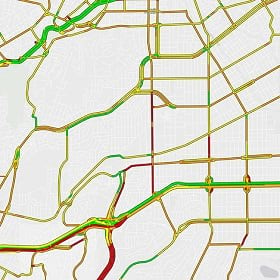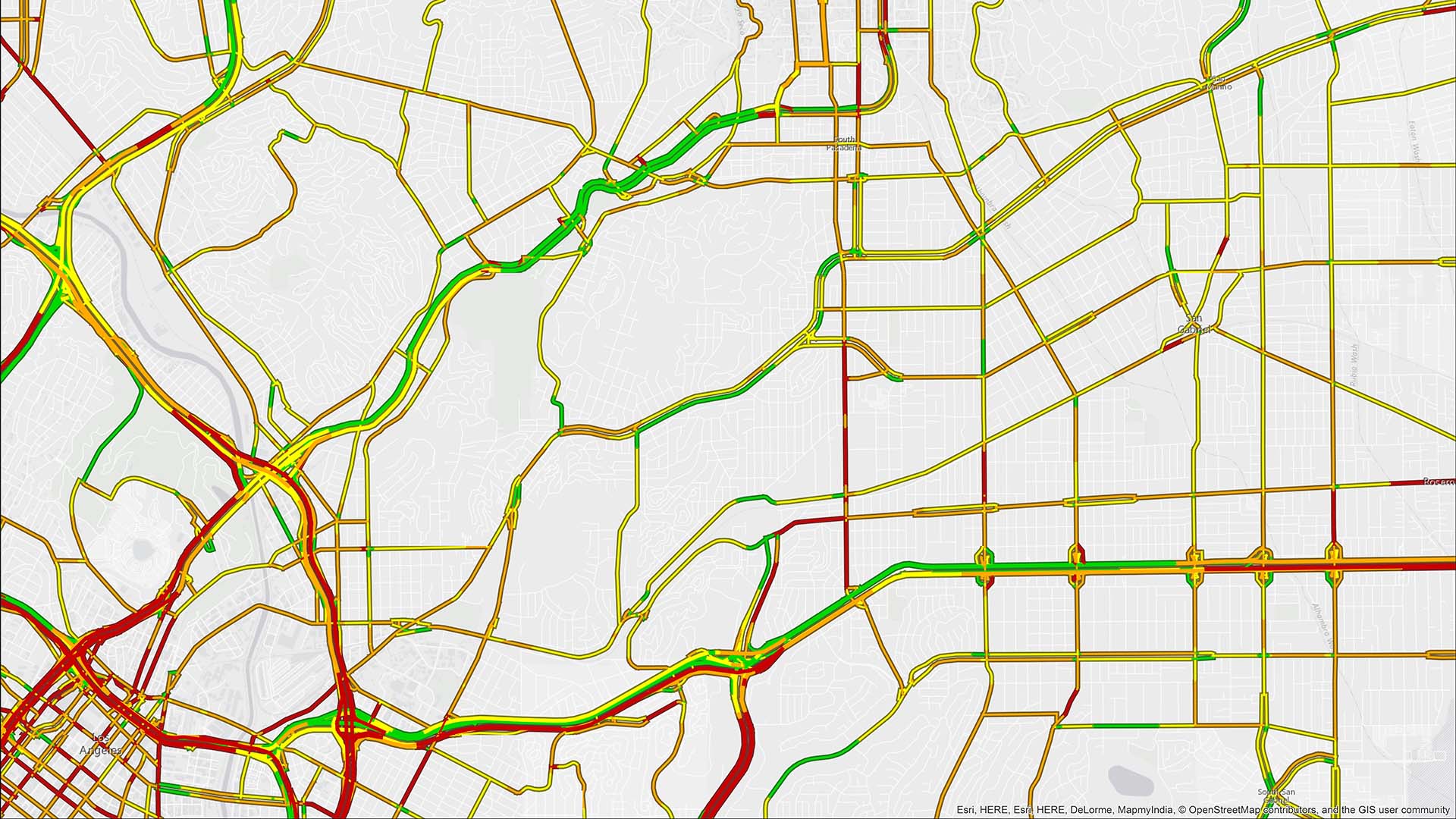For years, one health services company’s team of nurse practitioners and physician assistants had been criss-crossing each other on highways and city streets. They were making home visits to members of a health program focused on providing preventive care. Nationwide, more than 1,000 practitioners carried out in-home medical exams for the plan’s members, racking up millions of car miles a year en route.
The zig-zagging was a drain on the team’s efficiency. Clinicians found themselves bumping into one another in apartment building stairwells, having come from opposite ends of town to cover two different members in the same complex. Then they headed back out in opposite directions.
“The [clinicians] had often noted the challenges of passing each other during the day,” explains the program’s regional director of clinical operations.
The company faced a modern-day version of the classic traveling salesman problem: how does a business deliver services or goods across a geographic area as efficiently as possible? Multiply that question by the hundreds of thousands of member visits the program completed in 2020 alone, and it becomes both a burning issue to solve and a challenge ripe for location intelligence.
Route Optimization Could Improve Member, Employee Satisfaction
The routing challenges clinicians faced each day weren’t just inconvenient, they were eating up valuable time. Nurse practitioners and physician assistants often felt rushed as they moved between appointments, and were limited in the number of cases they could cover in a typical 10-hour workday.
That’s a familiar challenge for executives in sectors as diverse as retail, restaurants, home services, and logistics. Before the COVID-19 pandemic took hold, consumers were already embracing home delivery in large numbers. Now, store closures and a stay-at-home mentality have accelerated the shift, sending retail e-commerce sales up 28 percent in 2020.
Businesses that rely on location intelligence are positioned to thrive in this new reality. An IDC Canada survey showed that organizations with mature location analysis practices saw a 25 percent improvement across key business metrics over a two-year period. Whether a company is moving people, transporting goods, or providing services, the geographic information system (GIS) technology that creates location intelligence is often at the heart of efficiency improvements.
At the health services company, the leadership team knew that smarter routing of home visits would do more than decrease costs. If done right, it could give clinicians more time with members, reduce cancellations, establish more predictable appointment times, and improve already strong member satisfaction scores.
The move could also have a positive effect on an employee’s work-life balance. Well-trained clinicians were already in high-demand before COVID-19. In fact, overall employment of nurse practitioners, anesthetists, and midwives has been projected to grow by 45 percent from 2019 to 2029. By creating better member and practitioner experiences, providers can cultivate a working environment that helps attract and retain top talent in tight markets.
The real question for company executives wasn’t whether to create a more efficient network to support exceptional patient care and employee experiences, but how.

I consider health [to have] its own unique place in terms of logistics. It’s a trusted relationship between our clinicians and our members. . . . We want to honor those kinds of trusted relationships when we build this capability.
Using Data to Transform Human Experiences for the Better
For the health services company, the solution had to marry the right technology with an understanding of exactly what the program is designed to deliver: proactive, preventative health care for real people.
“We are not a delivery product,” says the company’s vice president of analytics. “We focus on human interactions, so the team studied how to improve logistics without compromising an exceptional member experience.”
The result was a pilot route optimization program that the company rolled out in Texas in late summer 2019. Focused on the program’s logistics strategy, the pilot aimed to improve both the bottom and—importantly—front lines for several dozen local clinicians and the members they serve.
Working together, the analytics and program teams developed a process to feed scheduling data into GIS route optimization algorithms, which generated the most efficient distribution of appointments and routes, including which clinicians should visit each member.
For the program’s front-line workers, the impact was huge. Dispatchers sent optimized route plans to a clinician’s tablet or smartphone, and the clinician benefited from the efficiency of smarter routes and shorter drive times.
Still, while GIS has excelled at planning everything from John Deere’s dealer locations to maintenance work on FedEx planes, the home visits program had traits that traditional use cases did not. The team needed enough flexibility in its route optimization solution to satisfy all the nuances of member care.
Some members prefer either a male or female clinician. Others request the same clinician they saw last visit, or one who speaks a certain language. Those prerequisites culled about 25 percent of possible appointments from the pilot. The analytics team set to work using GIS algorithms to analyze the rest.
That required tweaks like holding off on announcing which nurse practitioner or physician assistant would cover an appointment until much closer to the date.
“This allowed the GIS algorithms to wait for all—or at least most—appointments to be scheduled before committing the assigned APCs,” explains the analytics team’s data scientist and GIS analyst. “That way the algorithms had as much information as possible on schedule adjustments and cancellations before making a decision.”
During the pilot program, analysts manually verified the proposed routes to ensure that no patient preference, however subtle, was overlooked—a process that would eventually need to be automated in order to scale.

It was certainly exciting. . . creating a solution that our clinical team has been asking for, allowing us to serve our members better while helping our clinicians have more efficient days.
Starting Local, Thinking National, and Building Momentum
By February 2020, the route optimization pilot had helped program managers reassign more than 300 appointments along 200 routes, and the GIS-optimized schedules had saved clinicians over 2,000 miles and 45 driving hours in just five months. That amounted to a 10 percent decrease in drive time across the routes changed, and a 12 percent drop in drive distance—a substantial cost savings for the relatively small initial group.
The regional program director says that when routes are more efficient and days run smoother, clinicians provide an even higher level of service for a program that is already well regarded by members. When members can consistently rely on predicted arrival times and see their clinicians working without rushing, it makes a real difference in the member’s day. It also empowers clinicians to focus not simply on making the appointment but making the most of it.
The nurse practitioners and physician assistants say shorter routes between visits allow them to repurpose saved minutes into member care, according to the director. “They can spend that time with our members ensuring a high-quality exam, teaching, and addressing any of the member’s needs.”
That supports a better working environment at a time when healthcare professionals are stretched thin. In the director’s words, the optimization program is a way “to help our employees have a better work-life balance and then give that time back to our members.”
The results became a promising precursor to the company’s next business challenge: how far could they extend those savings and improvements by applying GIS across thousands of clinicians, and millions of appointments, nationwide?
As the Pilot Proved Itself, the World Shifted Gears
Buoyed by the pilot’s progress, the company was poised to expand the program nationally. Then the world ground to a halt. The company primarily serves Medicare members, and their age made them particularly vulnerable to COVID-19. In deference to safety protocols, program directors temporarily prioritized virtual appointments over in-home visits.
The analytics team used the time to study the results from the pilot stage and ensure they were ready to expand GIS route optimization across the program nationally, which they did in Q4 of 2020. The analytics VP says they’re now well positioned to tackle what many call a care gap that’s widening under the weight of a strained healthcare system.
The team has created processes that will make GIS-optimized routes feasible on a much larger scale. And they’re incorporating stakeholder feedback every step of the way. Most importantly, they’re working to keep their members and clinicians at the heart of the location intelligence solution.
“This program has been proven to reduce hospitalizations and increase visits to the primary care provider, closing the loop to ensure once we leave, that journey continues onto that healthier life,” the regional director says. “Being out there in the home is really important and relevant right now.”
And it’s likely to become even more relevant as the company expands its use of location intelligence to support ever higher levels of member care.
The Esri Brief
Trending insights from WhereNext and other leading publicationsTrending articles

December 5, 2024 |

July 25, 2023 |

November 12, 2018 |

February 1, 2022 |

July 29, 2025 |

July 14, 2025 |





